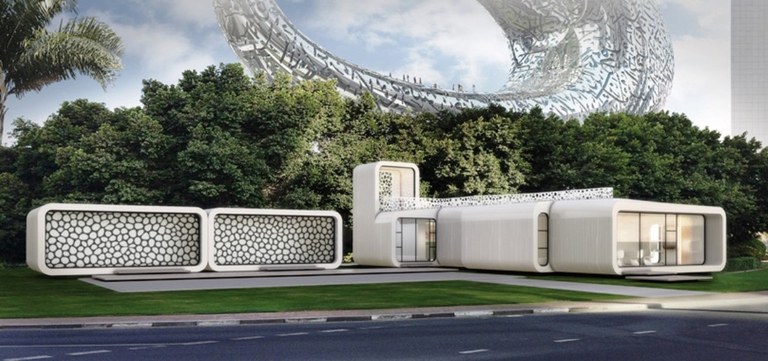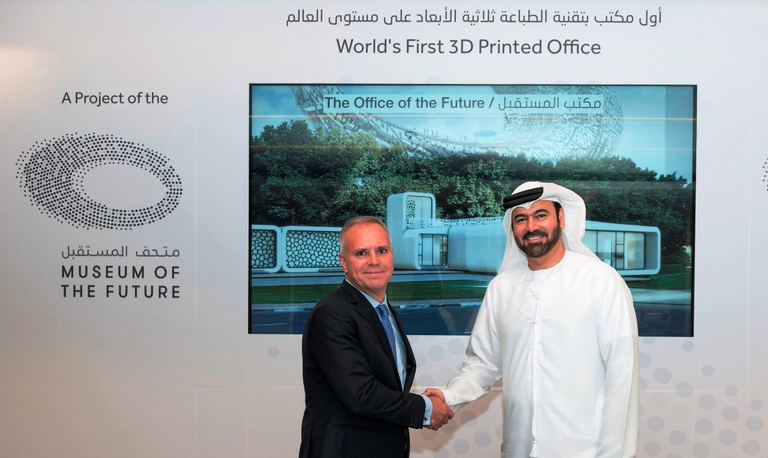
Niseko, Toya-Usu and Shiraoi are three Hokkaido destinations for travellers who want to feel close to the communities they’re visiting.
Nestled within the iconic Emirates Towers, the Office of the Future is the world’s first 3D-printed office, located in Dubai. It is now fully operational. How to 3D-print an office A 3D-printer measuring 6 metres in height, 36 metres in length and 12 metres in width was used. It took only 17 days to print and was installed on
Nestled within the iconic Emirates Towers, the Office of the Future is the world’s first 3D-printed office, located in Dubai. It is now fully operational.
A 3D-printer measuring 6 metres in height, 36 metres in length and 12 metres in width was used. It took only 17 days to print and was installed on site in two days, significantly faster compared to traditional construction methods. The process required one person to monitor the printer’s functioning, seven people to install the building components, as well as a team of ten electricians and specialists to take care of the mechanical and electrical engineering. The entire cost of the project was only 140,000 dollars: the technique cut both building and labour costs by 50 per cent compared to conventional buildings of similar size, according to Reuters. These savings translate into enhanced productivity, higher economic returns and increased sustainability if invested conscientiously.
The 3D-printed office was constructed using a special mixture of cement and building materials designed and made in the United Arab Emirates (UAE) and United States. It was given an arc shape for safety purposes and to ensure stability.
Quite appropriately the structure, which covers 250 square metres, will host the Dubai Future Foundation, a museum showcasing innovative designs. It has been conceived to offer the possibility for joint work between employees, and enhance the quality of the time spent at work. The goal was to shift from traditional work environments and provide greater opportunities to stimulate innovation and communication between teams. The design also offers space for exhibitions and workshops as well as other events. Innovative features have been adopted to reduce energy consumption, such as window shades that offer protection from direct sunlight and keep the building cool.
The office is the result of a partnership between Dubai and WinSun Global (Yingchuang in the original Chinese), a high-tech enterprise engaged in the research and development of new construction materials and printing of 3D houses. Global architecture and engineering firms Gensler, Thornton Thomasetti and Syska Hennessy were also involved.
The initiative is part of the Dubai 3D Printing Strategy, which aims for 25 per cent of all buildings in the emirate to be 3D printed by 2030. This is a unique global initiative aimed at promoting the status of the UAE, and Dubai in particular, as a leading global centre of 3D printing. Although long tested in labs, 3D printing technology is rapidly coming of age and the project marks the beginning of an important transformation in the construction and design sector. It’s the most advanced 3D printed structure ever built on this scale and put into actual use.
Siamo anche su WhatsApp. Segui il canale ufficiale LifeGate per restare aggiornata, aggiornato sulle ultime notizie e sulle nostre attività.
![]()
Quest'opera è distribuita con Licenza Creative Commons Attribuzione - Non commerciale - Non opere derivate 4.0 Internazionale.
Niseko, Toya-Usu and Shiraoi are three Hokkaido destinations for travellers who want to feel close to the communities they’re visiting.
We talked to World Happiness Summit organiser Karen Guggenheim about the connection between the planet’s health and our happiness.
The new generation of high-performance wood materials offers unexpected hi-tech possibilities to the worlds of design and architecture.
A group of experts in Tokyo suggested pouring radioactive water from Fukushima into the open sea. A marine biochemist explains the consequences of this absurd decision.
By recovering clothes discarded in the West, Togolese designer Amah Ayiv gives them new life through his high fashion creations.
All catwalks in July will be broadcast online: after Paris, it’s Milan Digital Fashion Week’s turn. And the biggest beneficiary is the environment.
Disabled travellers need not fear Japan. Accessible Japan founder Josh Grisdale tells us about his commitment to opening the country’s doors to everyone.
Kalongo Hospital in Uganda is on high alert. Medics are facing the pandemic amid an already precarious healthcare situation, in a country with only 55 intensive care beds.
Indigenous peoples in the isolated region are suffering from poor access to health, with several cities becoming hotspots of coronavirus in the Amazon. Indigenous leaders, health experts and NGOs are calling for international help.









